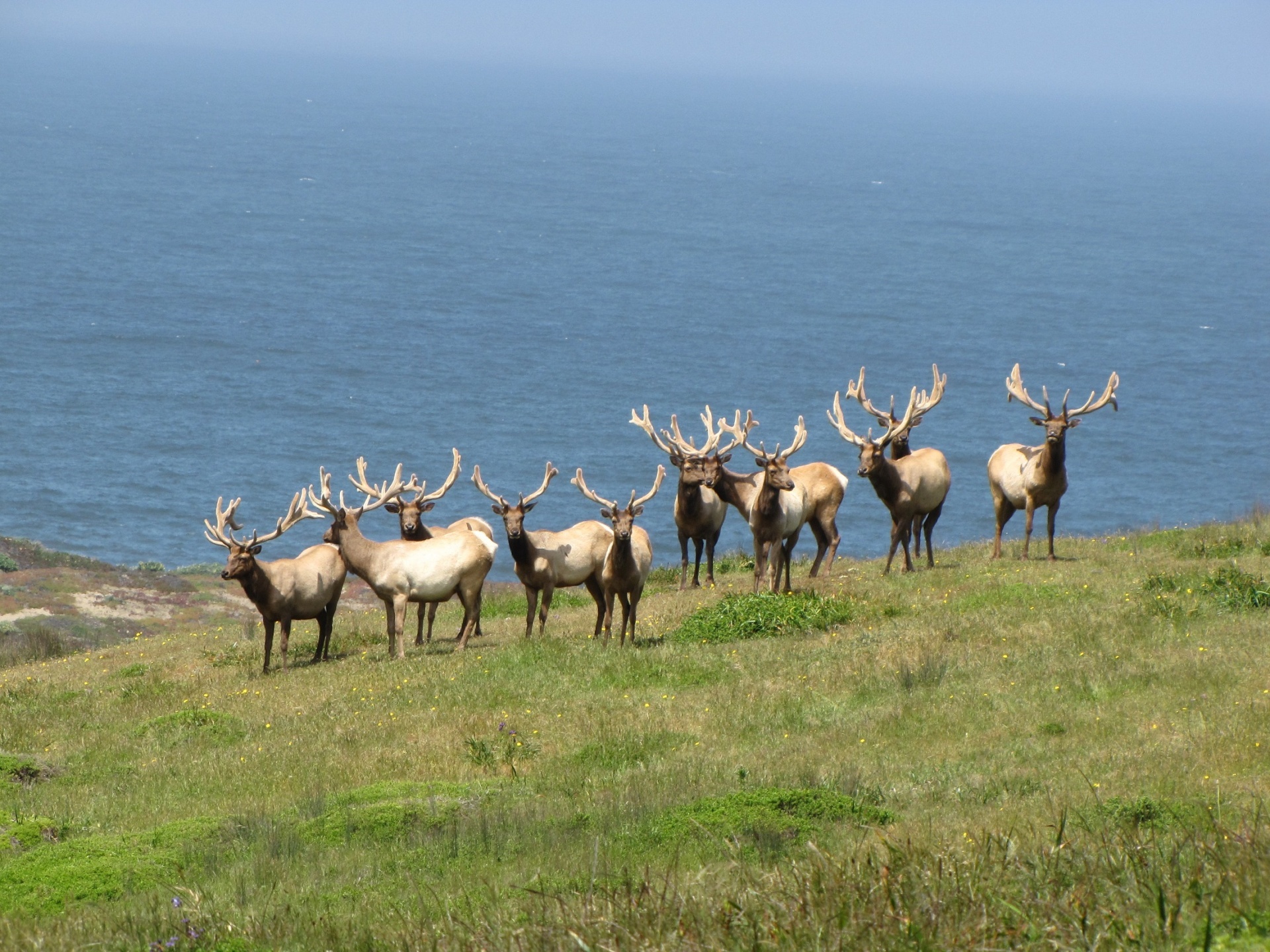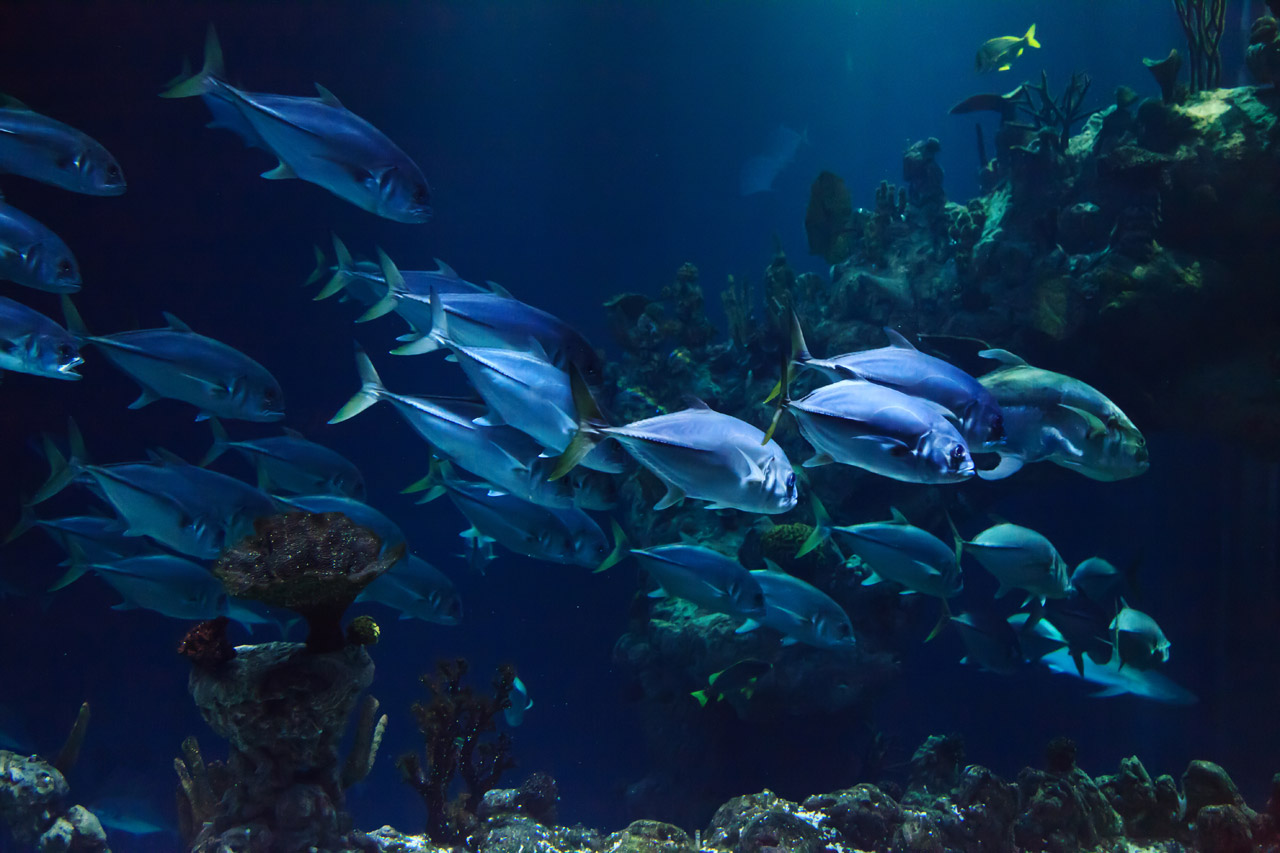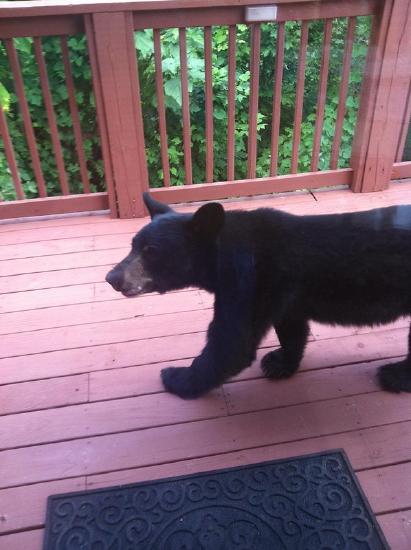1.1: Introduction to Wildlife Biology
- Page ID
- 95314

Figure \(\PageIndex{1}\): Bull tule elk overlook the Pacific Ocean at Pt. Reyes National Seashore. Image courtesy of Jean Beaufort, CCO 1.0, Public Domain Pictures
The word “wildlife” is generally used to reference vertebrates - mammals, birds, reptiles amphibians, and fish that are neither human nor domesticated. The word “fisheries”, often included with wildlife, refers to fish and other aquatic animals, usually ones that are commercially valuable or otherwise harvested by humans. The study of wildlife, however, embraces much more than that. Wildlife biology includes studying the habitat that these species need to exist, as well as the interactions of wildlife species with the other members of their communities.Wildlife keep ecosystems functional, and healthy ecosystems allow us to survive. When wildlife species disappear, ecosystems suffer.
The basic needs of wildlife include food, water, shelter, and territories in which to live.
Food
Food sources for wildlife may include plants for herbivores, other animals for carnivores, or some combination of both for omnivores. Animals that are prey can be other wildlife species, or, animals that are typically not included as wildlife (such as insects). All of these are important for the survival of wildlife, and are studied as part of their habitat and interactions. Wildlife species do not exist in a vacuum - they are an integral part of the communities in which they reside.
Water
All organisms require water to survive, but that water can come in a variety of forms. Marine wildlife and fishes are immersed in water. Marine and estuarine fishes and wildlife are seldom without water, and are osmotically adapted to living in salt water habitats. Those that occur in areas along tidal shores have adaptations to resist drying out during low tide, such as air tight shells, stored water, or burrowing in the substrate. The availability of water in freshwater systems (lakes, rivers, streams, and ponds) can vary seasonally. Seasonal ponds and streams can dry up, and the wildlife that depend on them need adaptations to scarce water resources for part of the year. Some fishes and amphibians will bury in the mud, even withstanding drying out. Others might migrate to other places that still have water.

Figure \(\PageIndex{2}\): Otters depend on water for their survival. (Image courtesy of Vera Kratochvil, CC0 1.0, Public Domain Pictures
Terrestrial (land-based) wildlife species also require water. In areas with ample rainfall, access to water is generally not an issue of availability, but it can be an issue for prey species, which must gather in a place known to predators. In areas where rainfall is more sporadic, migration to water sources may be a seasonal occurrence for wildlife species. In deserts, there may not be standing sources of water at all, and instead, species rely on their food to meet their water requirements. Both plant and animal material hold water, and many desert wildlife species are adapted to conserve water by having concentrated urine, or being active at night rather than the heat of the day.
Shelter
Most wildlife species require cover (shelter) for travel, resting, breeding, feeding, and nesting away from predators. This cover is a unique combination of habitat requirements for each species. For instance, mallard ducks require reeds and brush at the edge of standing water in order to sleep and camouflage their nests against predators. Other bird species such as the roseate spoonbill nest in trees to lift them above the forest floor and water's surface, where predators roam. Bats and other nocturnal (nighttime) animals require a shaded place to avoid daytime temperatures and predators, emerging at night to live. This can be the case with aquatic organisms as well. On a coral reef, a “changing of the guard” occurs as day moves into night. Diurnal (daytime) fishes such as parrotfish move to shelter in the coral, and nocturnal fishes such as the squirrel fish emerge from the coral to feed under the cover of darkness. The hours between daytime and night (the crepuscular hours) are when many predators are active. Both diurnal and nocturnal prey species are on the move, and the dim light makes it difficult to see predators coming.

Territories
Many wildlife species also require territories - spaces that are defended by organisms for mating, nesting, roosting, and/or feeding. They contain the food, water, and cover that the species needs to survive. Territories also have the advantage of providing resources for potential mates, and keeping out potential competitors for those mates. In these cases, protecting a small portion of land or water that is smaller than an organisms territory is not enough to ensure a wildlife species’ survival. For instance, a big predator such as a mountain lion can require a range of up to 60 square miles (Midpeninsula Regional Open Space, 2022). In some areas, such as in South Florida, much of the available land has been converted from undisturbed habitat into highly developed areas. Once changed for human habitat, the habitat no longer contains the resources necessary for survival, and a subspecies of the mountain lion, the Florida panther, is in danger of extinction.
Why it Matters
As the human population continues to grow and we expand our reach into undisturbed habitat, direct interactions between humans and wildlife become more frequent. Our actions affect their safety, but their actions can also affect us as well. Wildlife management often involves educating the public on how to live in close proximity to wildlife species while keeping both wildlife and people safe from physical harm.

Because wildlife species require food, water, cover, and territories, it is important to study these aspects of their survival, and not just the characteristics or behavior of individual species. When considering the interactions of wildlife and human activities, this becomes even more important. Understanding how resources have changed for wildlife due to human activities requires a baseline of information about what their needs were to begin with. Wildlife biologists make their careers studying not just the individual species themselves, but how they are tied to their surroundings. Wildlife conservationists need to understand the changes to their surroundings, and how we can correct the impact that human activities have had on them.
References
Midpeninsula Regional Open Space, 2022. Fact Sheet: Mountain Lions. Retrieved on 21 October 2022 from www.openspace.org/sites/default/files/Mountain_Lion_Facts.pdf.

